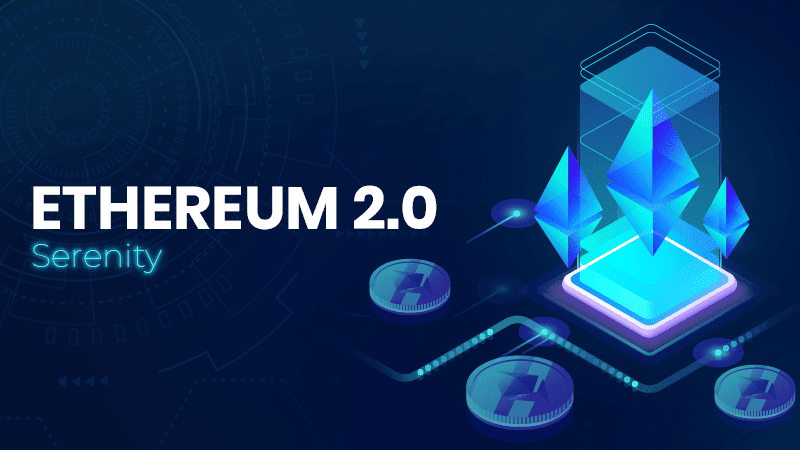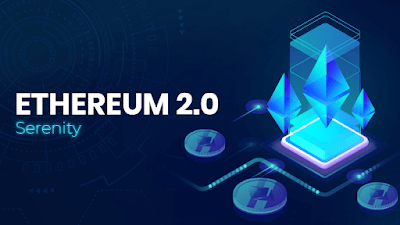Planned for many years, the transition of Ethereum to proof of stake is accumulating delays. However, the year 2022 should mark a turning point in this transformation. After a name change, since ETH 2.0 must now be called consensus layer, Vitalik Buterin wants to speed up the updates of migration to proof of stake by June. But this decision is not just a technical decision, it serves as a declaration of war on the mining industry.
Transforming Ethereum Architecture
Undisputed king of decentralized finance for four years despite the arrival of many blockchains, Ethereum is suffering from its success. The growing number of transactions is increasingly congesting the network and the explosion of NFTs has further aggravated the situation. During the summer of 2021, the increase in transactions on Opensea blocked the Ethereum network several times and increased transaction fees. During this period, transactions could thus go up to 200 dollars. It was therefore necessary to change the architecture of Ethereum to increase scalability. In addition, the use of proof of work is increasingly criticized for ecological reasons. The proof of stake being much less energy-intensive, it was therefore necessary to change the model.
However, this could not be done on any condition. The capital invested in the protocols on Ethereum is such that this change should absolutely not affect the security of the network. Vitalik Buterin therefore chose an architecture using sharding to reconcile scalability, decentralization and security. The first step of Ethereum 2.0, the Beacon Chain, was set up in December 2020. Since then, ETH 1.0 and ETH 2.0 coexist pending the various updates necessary to achieve proof of total stake.
The Ethereum 2.0 future of Layers 2
The gradual arrival of ETH 2.0 also highlights the different layer 2 that have been installed since 2019. Indeed, one can wonder if these solutions are doomed to disappear with the transition to ETH 2.0. These layer 2 solutions use Ethereum network security. But they adopt another consensus for validating transactions. This allows them to improve scalability and offer significantly lower transaction fees than Ethereum. Of these solutions, Polygon is obviously the most popular. But since 2021 it has been supplemented by several other layers 2: Arbitrum, Optimism but also MetisDAO which made an astonishing bullish rally at the end of the year.
In fact, the transformation of Ethereum does not sign the end of these layers 2. These networks are very present in the blockchain landscape and it is difficult to see all their applications migrating to Ethereum. Moreover, Vitalik Buterin himself claimed that Ethereum would still need 2 layers to lighten the mainnet. In fact, you have to see Ethereum as a network made mainly for institutions because of the security it provides. It does not have the hegemonic vocation that one might attribute to it. In fact, among layers 2, MetisDAO could even benefit from the move to ETH 2.0 through the web3 environment it brings to users.
The Empowerment Of Ethereum
While the Beacon Chain, a brand-new, proof-of-stake blockchain, was launched over a year ago, the move to ETH 2.0 has not always been pushed back to a later date. We are therefore in the presence of a coexistence between ETH 1.0 (in proof of wook) and ETH 2.0 (in proof of stake). ETH 1.0 serves as the application layer and ETH 2.0 as the consensus layer. While the initial roadmap planned to implement shard chains and therefore finalize the consensus layer to then trigger the migration of applications from ETH 1.0 to 2.0 Vitalik Buterin multiplied the blows of force to accelerate the process and at the same time enter at war with the miners.
In 2021, the EIP 1559 proposal reduced transaction fees and introduced a burn equivalent to fees. With this proposal, Ethereum has gradually become deflationary. Vitalik then proposes to call ETH 2, the consensus layer. This avoids introducing a chronological conception of the transformation of Ethereum. What might seem like a sleight of hand not to mention the accumulated delay will finally take a back seat. Indeed, The Merge update which will bring together the consensus layer in proof of stake and the application layer, still in proof of work, will take place at the end of June. It will therefore be necessary that on this date the minors drop their graphics card and pass to the validation.
The Four Scenarios: What To Do With Graphics Cards?
We can therefore imagine several possible scenarios. Four are possible. If all the miners refuse the update, Vitalik will have lost its bet. We will still have to wait before going to proof of stake. If a significant part refuses, we are witnessing the worst-case scenario. Indeed, there could be a fork from which two Ethereum blockchains would emerge. This scenario has already happened in 2016 with the creation of Ethereum Classic because of the fraudulent project The DAO. With this scenario, there would be a risk of seeing some of the NFTs present on Ethereum disappear.
If the minors accept, they will have a choice to make. Either they get rid of their graphics card to go to validation. But this would result in putting a lot of graphics cards on the market, which could hurt the sales of NVDIA, which is the leader in this sector. Finally, those who want to stay in mining could move to other blockchains, increasing competition on them. Either way, The Merge will be a big economic shake-up in the mining world!
A real sea serpent in the cryptosphere, the transition from Ethereum to proof of stake could happen faster than expected. Despite successive delays, Vitalik Buterin has decided to speed up The Merge update to force miners to accept this passage. The next few months will tell us if this bet succeeds. Whatever the outcome, Ethereum will enter a new era.


